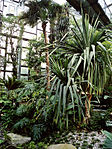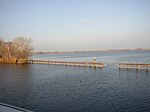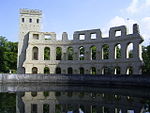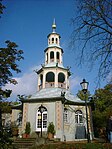Weißer See (Potsdam)
Brandenburg geography stubsFederal waterways in GermanyGeography of PotsdamLakes of Brandenburg

Weißer See is a lake in Brandenburg, Germany. At an elevation of 29.4 metres (96 ft), its surface covers 0.26 square kilometres (0.10 sq mi). The Sacrow–Paretz Canal flows through the lake.
Excerpt from the Wikipedia article Weißer See (Potsdam) (License: CC BY-SA 3.0, Authors, Images).Weißer See (Potsdam)
Eichelkamp, Potsdam Nedlitz
Geographical coordinates (GPS) Address Nearby Places Show on map
Geographical coordinates (GPS)
| Latitude | Longitude |
|---|---|
| N 52.433333333333 ° | E 13.033333333333 ° |
Address
Wagenplatz Eichelkamp
Eichelkamp
14469 Potsdam, Nedlitz
Brandenburg, Germany
Open on Google Maps









